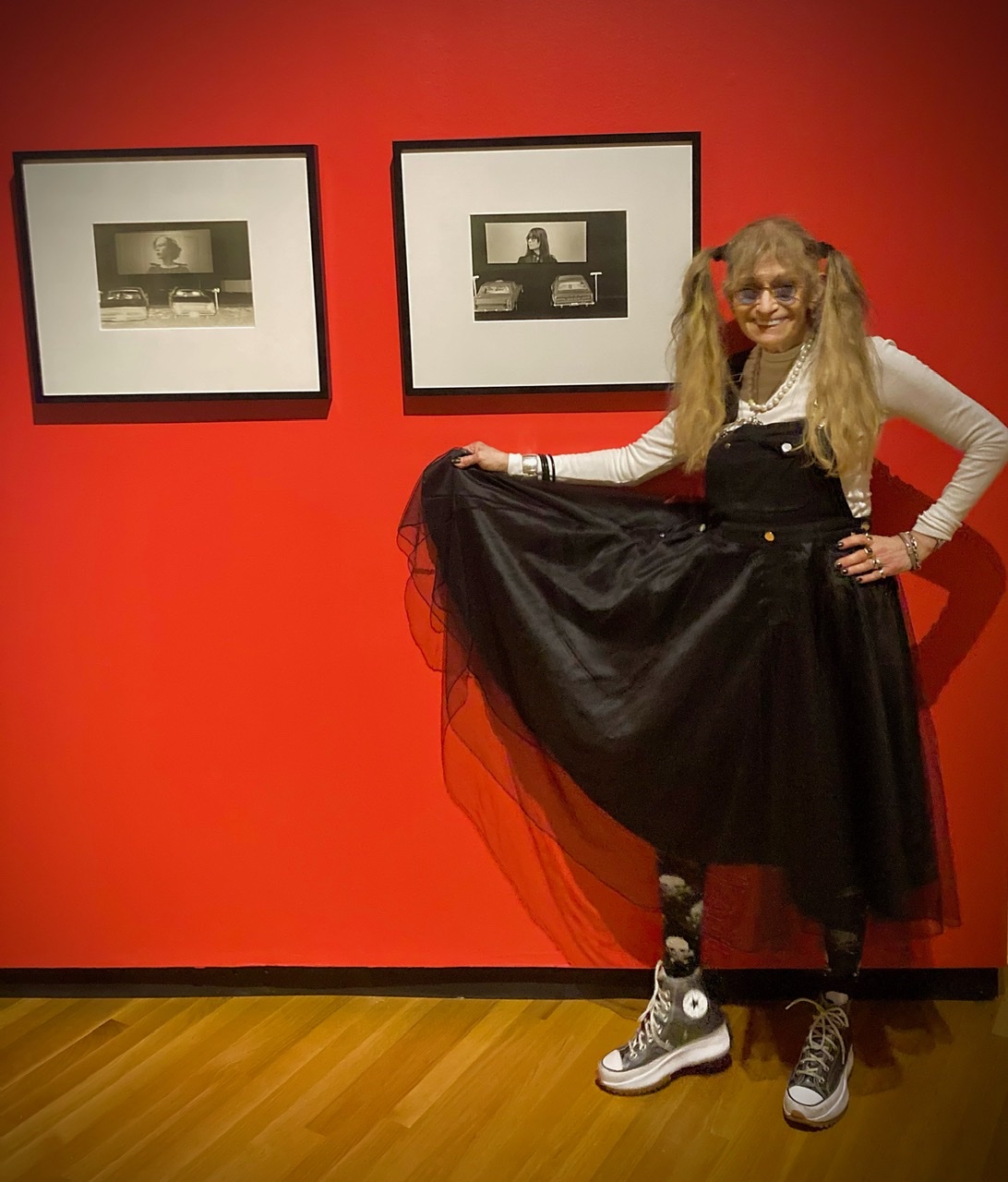Photographing the intersection of motion and emotion
March 4, 2022
 Juliana Vandermark
Juliana VandermarkMarcia Resnick was five years old when her art was first hung in a gallery. Now, 66 years later, Resnick’s art is featured here at Bowdoin, culminating a curation project that began before the pandemic.
A natural artist from a young age, Resnick grew up painting and drawing. When she discovered photography in school, she began to explore combining mediums. As photography grew in stature as an art medium in New York City, so did Resnick’s involvement and dedication to the artform.
“I had a sense of guilt about snapping the shutter and it being art. I worked my way into believing that just a photograph on its own could be as good as painting. These were the days of like the first two photo galleries in New York City,” Resnick said. “Photography was definitely starting to be considered a fine art exactly at the time that I was excited about taking pictures.”
The works highlighted in the exhibit are primarily from the ’70s and ’80s, but Resnick feels that they remain timely today.
“I was often misunderstood in my own time. It’s very relevant today because it’s finally being looked at and considered and understood,” Resnick said. “It’s sort of nice to be ahead of your time.”
The pieces tackle social and political issues as well as personal ones. One of Resnick’s self portraits in “Revisions” depicts a silhouette of her figure between curtains, with only her stomach with painted curtains in view. The work hangs with the text: “It was curtains for her stomach.” Drawing from personal experiences with anorexia, this portrait was staged and shot with a self timer.
“I did a whole series on anorexia, which is in the book. And there’s a lot for young women to learn from a person who was once anorexic,” Resnick said.
Resnick’s work includes text, which she differentiates from captions.
“It’s very important to know that the writing is not captions, it’s text. And the text and the photographs are interrelated—they affect each other. It’s very much on purpose. I write and I take photographs.”
This intertwining of artforms doesn’t stop at text for Resnick.
“It’s great for not only the person behind the camera, but the person in front of the camera. Yeah, you can learn a lot from posing. It’s a real dialogue between you and the person you’re photographing,” Resnick said.
Part of this dialogue, Resnick said, is movement. While photography is traditionally depicted as a static medium of art, to Resnick it is a dynamic, motion-filled artform. Not only does the motion reside within her subject—their presence and poses—but motion exists within her, the photographer, as she mirrors her subject’s poses from behind the camera.
“After Jackson Pollock, we realized how much physical movement could affect painting. Moving your arm and throwing paint and making abstract art in ways where the artist is moving, it’s like dance and theater, and all of the arts, they can be applied all at once,” Resnick said.
Photography to Resnick is a performance, a dialogue and her means of storytelling.
“Exploring your world and yourself are things that you can do with photography,” Resnick urged. “Don’t be boring!”
Standing in the middle of the gallery in her flowing overall tulle dress, pigtails, skull tights, platform high tops and layers of intricate jewelry, Resnick looked anything but boring.
The exhibit was curated by Bowdoin College Museum of Art Co-director Frank H. Goodyear III along with colleagues Lisa Hostetler and Casey Riley.
“[Hostetler and Riley] shared an equal enthusiasm for Marcia’s work. And around that time, we began a conversation with Marcia and as well as her gallerist, a woman by the name of Deborah Bell,” Goodyear said.
Out of the photographs Marcia has been creating for over 50 years, the team selected 84 works. They began the project four years ago.
“These, I think, are the pictures that sort of best represent her career,” Goodyear said.
When asked about the curation, Marcia was only disappointed that more of her work couldn’t be included, but contended that it just means there is more of a reason to get her book.
“The presentation is magnificent. I think the show looks absolutely terrific against black and that red wall. Often photo galleries are boring … but [Goodyear] did an incredible job,” Resnick said. “It’s a good cross section of my work of different things.”
“[Resnick] is a hero of mine. She provides a wonderful example of an incredibly hard-working photographer that balances humor and experimentation to solve problems and tell stories. Students can stand to learn a lot from her willingness to take risks and have fun. We are lucky to have the show at our museum,” Professor of Art Michael Kolster said in an email to the Orient.
When asked what Resnick hopes students will take away from this exhibit she zoomed out to the bigger picture.
“I would hope that they could learn how to think about looking and seeing, and especially the photography students, learn about the kinds of ways of looking at things that they can photograph,” Resnick said. “They think they don’t have to just do snapshots, that they can actually think about what they’re gonna photograph before they photograph.”

Comments
Before submitting a comment, please review our comment policy. Some key points from the policy: